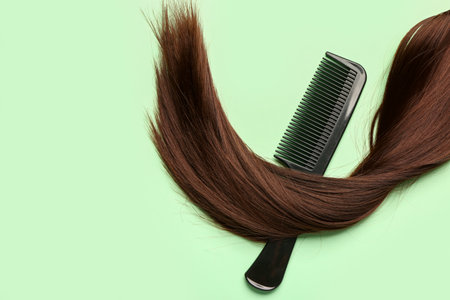Introduction: Why Waxing Duration Matters
If you’ve ever wondered, “How long does waxing really last?”—you’re not alone. For many of us juggling busy schedules, understanding the real timeline of waxing results is essential for effective beauty planning. Knowing how long you can expect your skin to stay smooth after waxing isn’t just about convenience; it’s also about setting realistic expectations and preventing disappointment. Whether you’re prepping for a vacation, a special event, or just want to enjoy silky skin as part of your self-care routine, having a clear idea of the waxing process and hair growth cycles will help you schedule your appointments more efficiently and avoid those frustrating in-between phases. In this article, we’ll break down what actually determines how long your waxing results last and why that matters for your personal grooming habits.
2. The Hair Growth Cycle Explained
To truly understand how long waxing results last, it’s important to demystify the hair growth cycle. Hair doesn’t grow in unison; instead, every hair on your body is at a different stage of its life. These stages—anagen, catagen, and telogen—play a significant role in the effectiveness and duration of your waxing results.
An Overview of Hair Growth Phases
| Phase | Description | Impact on Waxing |
|---|---|---|
| Anagen | This is the active growth phase when the hair is firmly rooted in the follicle. | Waxing during this phase removes the hair from the root, resulting in longer-lasting smoothness. |
| Catagen | The transitional phase where growth stops and the follicle shrinks. | Hairs in this phase are more easily removed, but may not be as deeply rooted. |
| Telogen | The resting phase; old hairs detach to make way for new ones. | Waxing might not remove all hairs since some are already detached and ready to shed naturally. |
Why Does This Matter for Waxing?
The effectiveness of waxing largely depends on which phase your hairs are in at the time of your appointment. Since only about 80-90% of your hair is in the anagen (growth) phase at any given time, some hairs will inevitably remain after waxing or regrow sooner than others. This explains why you might notice new hair growth within a couple of weeks, even if your skin felt silky smooth right after your wax.
Timing Your Appointments for Best Results
Understanding these cycles can help you set realistic expectations and plan your waxing schedule. Over time, regular waxing can help “sync” more hairs into the same growth phase, leading to smoother skin that lasts longer between appointments. In short, knowing about anagen, catagen, and telogen isn’t just science—it’s your secret weapon for maximizing your waxing results!
![]()
3. Average Waxing Results: What Most People Experience
When you get a waxing treatment, one of the first questions that comes to mind is, “How long will my skin stay smooth?” For most people in the U.S., the average results last between three to six weeks. However, this window can vary quite a bit depending on individual hair growth cycles and a few other factors.
Typically, after waxing, you’ll notice that your skin feels silky and hair-free for about two weeks. This is when your hair follicles are still in their resting phase and new hair hasn’t started to grow back yet. By week three or four, some fine regrowth may begin to appear, especially if you have a naturally fast-growing hair type or certain hormonal influences. For many Americans who wax regularly, it’s common to book appointments every four to six weeks to maintain that smooth feeling.
It’s important to understand that not everyone will have the exact same experience. Genetics play a big role—some people naturally have slower or finer hair regrowth, while others may notice stubble sooner. Your previous hair removal habits also matter; if you’ve been shaving for years, your hair might seem to grow back quicker at first when you switch to waxing. Over time and with consistent waxing, many clients notice their regrowth becomes softer and sparser.
Other factors like age, hormones, the area of the body being waxed, and even medication can influence how quickly your hair returns. For example, facial hair often grows faster than leg or arm hair. Hormonal changes during puberty, pregnancy, or menopause can also impact your personal waxing timeline.
So while the “average” smooth-skin period post-waxing is three to six weeks, remember that everyone’s body is unique. If you’re new to waxing or switching from another method, give your skin and hair some time to adjust—and don’t hesitate to ask your esthetician for personalized advice based on your experience!
4. Factors That Affect How Long Waxing Lasts
While waxing offers smooth, hair-free skin, the longevity of your results can vary widely from person to person. Understanding the factors that influence how long waxing lasts can help you set realistic expectations and plan your maintenance routine. Let’s explore the key elements that play a role in waxing longevity, including hair type, genetics, body area, and lifestyle.
Hair Type Matters
The thickness, color, and growth pattern of your hair significantly impact how long waxing results last. Coarse or darker hair types tend to grow back more quickly after waxing compared to finer or lighter hair. This is because coarser hair is often rooted deeper in the follicle, making regrowth more noticeable sooner.
Genetics: Your Built-in Timeline
Your genetic makeup is one of the biggest determinants of hair growth cycles. Some people naturally have faster-growing hair due to their genetic predisposition, while others may enjoy slower regrowth. If you’ve noticed your hair grows quickly elsewhere on your body, chances are it will do the same after waxing.
Body Area: Not All Skin Is Created Equal
The area of the body being waxed also affects how long you’ll stay smooth. For example, leg hair generally grows slower than facial or underarm hair. Heres a quick overview:
| Body Area | Average Regrowth Time |
|---|---|
| Legs | 3-6 weeks |
| Arms | 2-4 weeks |
| Bikini/Underarms | 2-4 weeks |
| Face (Brows/Lip) | 1-3 weeks |
Lifestyle Habits and Waxing Results
Your daily routine and skincare habits can also influence how long your waxing results last. Activities that promote exfoliation—like swimming in chlorinated pools or using certain body scrubs—can make new hair appear faster by removing dead skin cells and encouraging regrowth. Hormonal changes (due to stress, pregnancy, or certain medications) can also accelerate hair growth cycles.
Quick Tips for Longer-Lasting Waxing Results:
- Avoid hot showers and intense workouts for 24 hours post-wax to minimize irritation.
- Moisturize regularly to keep skin healthy and slow down visible regrowth.
- Stick to a consistent waxing schedule for best results over time.
By understanding these factors, you can make informed choices about your waxing routine and maximize your smooth-skin days!
5. How to Make Your Wax Last Longer
Want your smooth, hair-free skin to last as long as possible after waxing? You’re not alone! While everyone’s hair growth cycle is a bit different, there are some universal tips and aftercare practices that can help extend your waxing results. Here’s how you can keep that fresh-from-the-salon feeling for weeks.
Exfoliate Regularly—but Gently
About 48 hours after your waxing session, start gently exfoliating the area 2-3 times per week. This helps remove dead skin cells and prevents ingrown hairs, allowing new hair to grow out smoothly rather than curling back under the skin. Just be sure not to scrub too hard or use harsh products, especially right after waxing when your skin is sensitive.
Moisturize Daily
Keeping your skin hydrated is key. Use a fragrance-free, gentle moisturizer daily to prevent dryness and flakiness. Well-moisturized skin is less likely to trap hair under the surface, which means fewer bumps and a smoother appearance between waxes.
Avoid Hot Showers and Tight Clothing
For at least 24 hours post-waxing, skip hot showers, saunas, and tight clothing. Heat and friction can irritate freshly waxed skin and may even cause breakouts or ingrown hairs. Opt for loose-fitting clothes and cool or lukewarm water when bathing.
Skip Shaving Between Waxes
If you want waxing to become more effective over time, avoid shaving between appointments. Shaving disrupts the hair growth cycle, making it harder for all hairs to reach the ideal length for waxing at your next visit. Sticking with waxing will lead to thinner, finer regrowth and longer-lasting smoothness.
Be Consistent With Your Waxing Schedule
Consistency is key! Schedule regular waxing appointments every 3-6 weeks (depending on your personal hair growth cycle). Staying on track helps train your hair to grow in sync, which leads to better results and longer periods of smoothness over time.
Bonus Tip: Stay Sun Safe
Your skin is extra sensitive after waxing. Avoid direct sun exposure and always use SPF if you’ll be outdoors. This not only protects your skin but also prevents dark spots or irritation from developing post-wax.
6. When Is It Time to Wax Again?
Knowing exactly when to schedule your next waxing appointment can feel a bit tricky, especially since everyone’s hair grows at its own pace. On average, most people find that waiting about 3 to 6 weeks between waxes gives the best results, but how do you know when it’s really time for a touch-up? Here are some helpful tips to guide you through recognizing regrowth and timing your next visit just right.
Pay Attention to Your Hair Growth Cycle
After waxing, your skin usually stays smooth for a couple of weeks, but as new hair starts growing in, you’ll notice some stubble or soft regrowth. Ideally, hair should be about ¼ inch long (about the size of a grain of rice) before your next wax—this length allows the wax to grip effectively and pull hair from the root, resulting in smoother, longer-lasting results.
Look for These Signs
- Your skin is no longer smooth and you can feel or see short hairs.
- You’re experiencing itchiness or irritation due to regrowth.
- Your last waxing appointment was 3-6 weeks ago.
Pro Tip: Avoid Shaving Between Appointments
If you want the best results from waxing, resist the urge to shave between appointments. Shaving disrupts the hair growth cycle and can lead to uneven regrowth, making future waxing sessions less effective and sometimes more uncomfortable.
Listen to Your Skin
If your skin feels sensitive or irritated, it might be worth waiting an extra day or two before booking your appointment. Healthy, calm skin is key for a successful waxing session with minimal discomfort.
Plan Around Special Events
If you have an upcoming vacation or special occasion, try scheduling your waxing appointment 2-3 days beforehand. This gives any redness or sensitivity time to subside so you can feel confident and comfortable.
Stay Consistent for Best Results
Sticking to a regular waxing routine helps train your hair to grow back finer and more evenly over time. If you’re unsure about timing, don’t hesitate to ask your esthetician—they’ll be happy to help you find the ideal schedule based on your unique hair growth pattern and lifestyle needs.


